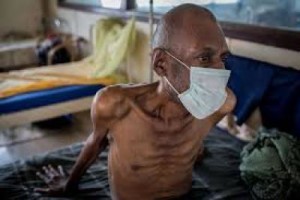A new tuberculosis (TB) drug regimen designed to improve options for TB therapy eliminated more bacteria from sputum than standard therapy and did so at a faster rate, according to data from a phase 2b clinical trial published recently in The Lancet. These results are published just as the global phase 3 clinical trial, designed to bring this regimen through the last stage of testing, has begun.

PaMZ is a three-drug regimen comprised of two candidate drugs that are not yet licensed for use against TB: pretomanid (Pa), formerly known as PA-824, and moxifloxacin (M), and one antibiotic, pyrazinamide (Z), which is approved for use in TB treatment today. The therapy is intended for those patients whose TB infections are sensitive to the three drugs, including people with drug-sensitive and multidrug-resistant TB (MDR-TB).
“The results of this trial show the potential for the PaMZ regimen to improve treatment for tuberculosis,” said Rod Dawson, MD, head of the Centre for TB Research Innovation at the University of Cape Town, South Africa, and lead author of the paper. “Especially noted is the fact that PaMZ may have a unique application as a potentially shorter, injection-free regimen for a select sub-group of patients with MDR-TB.”
The Phase 2b trial, known as NC-002, tested PaMZ in an eight-week study that enrolled more than 200 patients and took place at eight sites in South Africa and Tanzania. Nearly twice (71 percent) as many TB patients treated with PaMZ had no TB in their sputum when cultured at the end of the 2-month course of the trial compared to patients treated with standard therapy (38 percent). These results are based on liquid culture, the most sensitive diagnostic method available.
Patients in the arm of the trial that tested the effectiveness of PaMZ on MDR-TB responded similarly to those with drug-sensitive TB. However, the study group for MDR-TB was small. When added to evidence from pre-clinical and earlier studies, PaMZ shows the potential to treat drug-sensitive TB and some patients with MDR-TB in four to six months.
“PaMZ is the first regimen under development to treat both drug-sensitive TB and MDR-TB,” said Mel Spigelman MD, President and CEO of TB Alliance, the trial’s sponsor. “If successful, PaMZ could be a shorter, simpler, and safer treatment that would enable the scale-up of treatment.”
Twenty percent of the TB patients enrolled in NC-002 also were co-infected with HIV. The PaMZ regimen appeared to be effective independent of HIV status.
Limitations in standard TB treatment remain a strong barrier to TB control. The treatment and cure of a typical case of drug-sensitive TB currently takes between six and nine months. People with drug-resistant TB require a minimum of 18 to 24 months of treatment. This more extensive therapy requires more than 14,000 pills and daily injections for at least 6 months. The long duration of MDR-TB treatment, combined with the pain and side effects that treatment causes, are major obstacles to access. Only 20 percent of all MDR-TB patients receive any treatment, and of those who do, less than half (48 percent) will be cured, according to the World Health Organisation’s 2014 Global Report.
On the basis of these and other data, TB Alliance and its partners have launched a global phase 3 clinical trial named STAND (Shortening Treatment by Advancing Novel Drugs) in patients who are currently considered to have either drug-sensitive or multidrug-resistant TB.
Enrolment has begun in the STAND trial. STAND researchers expect to enroll 1,500 patients in 15 countries in Africa (Kenya, South Africa, Tanzania, Uganda, Zambia), Asia (China, Malaysia, Philippines, Thailand), Caribbean (Haiti), Eastern Europe (Georgia, Russia, Ukraine), and Latin America (Brazil, Peru) in this study. PaMZ will be tested in STAND as a four- and six-month treatment for drug-sensitive TB and a six-month treatment for drug-resistant TB, and also enrol those co-infected with HIV. Each patient will be followed for two years starting from the beginning of treatment. The STAND trial partners with many of the communities in which the study is conducted through its robust community engagement programme.
If successful in this Phase 3 trial, the PaMZ regimen would eliminate the need for injectable drugs and reduce the cost of MDR-TB therapy by more than 90 percent in those patients whose TB organisms are sensitive to the three drugs. It also promises to be compatible with commonly used HIV drugs, helping the millions of people co-infected with TB/HIV.
